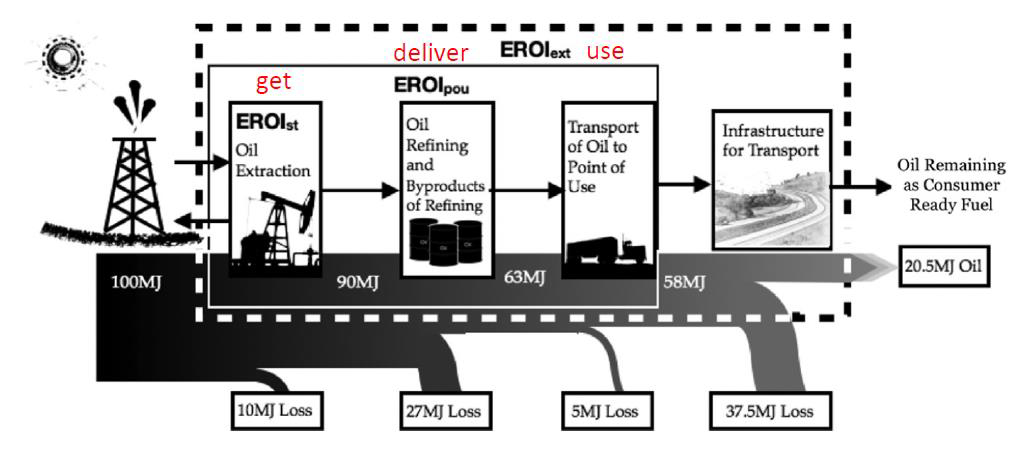EROI Boundaries
Revised 2 December 2023
In the 1970s and 1980s, net energy studies around the world were undertaken in response to the 1973 OPEC oil embargo which resulted in a four-fold increase in the price of petroleum. The New Zealand government funded several net energy studies under the umbrella of the NZERDC (Isaacs 1993).
Estimates of the EROI of alternative energy sources can vary widely depending on the boundaries of the study (Hall 2016). Figure 1 shows an example of the extent that EROI calculations can differ when different boundaries are applied.

Figure 1: EROI Boundaries (Hall et al. 2014)
There is an enormous difference between the net energy at the point of extraction – 90 MJ at the boundary of oil extraction from the ground compared to remaining net energy of 20.5 MJ as Oil Remaining as Consumer Ready Fuel which takes into account the infrastructure required for transport. Each of the energy losses from the point of extraction of fossil fuels in the ground to the movement of vehicles reliant on the use of infrastructure for transport are heat losses, and each burning of fossil fuels emits greenhouse gases to the atmosphere. The following EROI calculations are based on for every 100 MJ of oil in the ground.
At the point of extraction at the drilling rig, the Energy Return on Energy Invested is 100 MJ / 10MJ which is equal to an EROI ratio of 10:1.
At the point of use at the petrol station after extraction, refining, and transport to the petrol station, the energy returned on energy invested is equal to an EROI ratio of 2.38:1.
Driving vehicles requires infrastructure for transport. The Energy return on Energy Invested to provide fuel for Consumer Ready Fuel. Taking into account the energy cost of providing infrastructure for transport, is equal to an EROI ratio of 1.26:1.